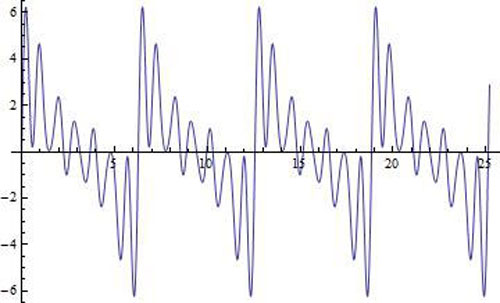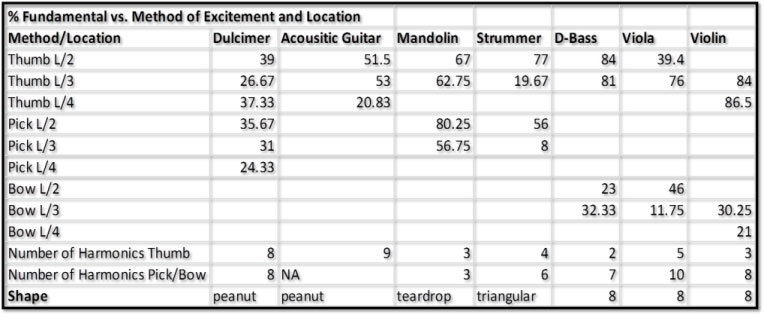Physics of Stringed Instruments
Gordon Ramsey – gpr@anl.gov
Katarzyna Pomian – kpomian@luc.edu
Loyola University Chicago
1032 W Sheridan Rd, Chicago, IL 60660
Popular version of paper 1pMU4 and 1pMU5 presented at the 2014 167th ASA Meeting in Providence Rhode Island.
Musical instruments create sounds at their natural vibrational frequencies, which depend upon their size and structure. The natural frequencies of a musical instrument are called the harmonics of the instrument. The parts of an instrument interact and force each other into vibrating at their harmonics (standing wave patterns). This is known as resonance. A string fixed at both ends can oscillate in many modes, called harmonics. These must keep the string fixed at the ends. These harmonics are shown in Figure 1.







The harmonic structure of stringed instruments is reflected in the string resonances, since they initiate the sound. High-speed videos of the string were taken to portray the real time oscillations. We created mathematical models of the strings from the harmonics, and compared the visual representations in the high-speed videos to them. A high-speed camera and a bright light source were used.
When the waveform is reconstructed from the harmonics, it looks like [Figure 9] below. This compares favorably with the actual waveform. The video shows the intermediate oscillations as a hesitation between the extremes.




The figure eight and triangular shaped instruments produced a significantly larger amount of harmonics with the pick as compared to the peanut or teardrop shaped instruments. The circular shaped banjo body excited the highest amount of harmonics, yielding its “tinny” sound.
The body oscillations mainly affected the fundamental and second harmonics. For the mandolin and the acoustic guitar, the body oscillations only affected the fundamental harmonics. The strummer data indicated that the notes excited with the thumb had a much larger correspondence with the body oscillations.
The following figures show the relations between the string and body resonances for the dulcimer, strummer and banjo that work together to form the unique sound of the instrument. The dulcimer and strummer have a wooden body, while the banjo’s body is a membrane. The colored numbers indicate different body resonance frequencies and the percents represent the fraction of the sound that is due to the body resonance. The dulcimer has a peanut shape and is comparatively much larger than the strummer, which is triangular. The strummer excited fewer harmonics than the dulcimer did.




Figure 15. Correlations of string resonances with body shape – seven of twelve instruments
References:
D. Hall, Musical Acoustics, 3rd Ed.
Rossing, The Science of Sound, 3rd Ed.
